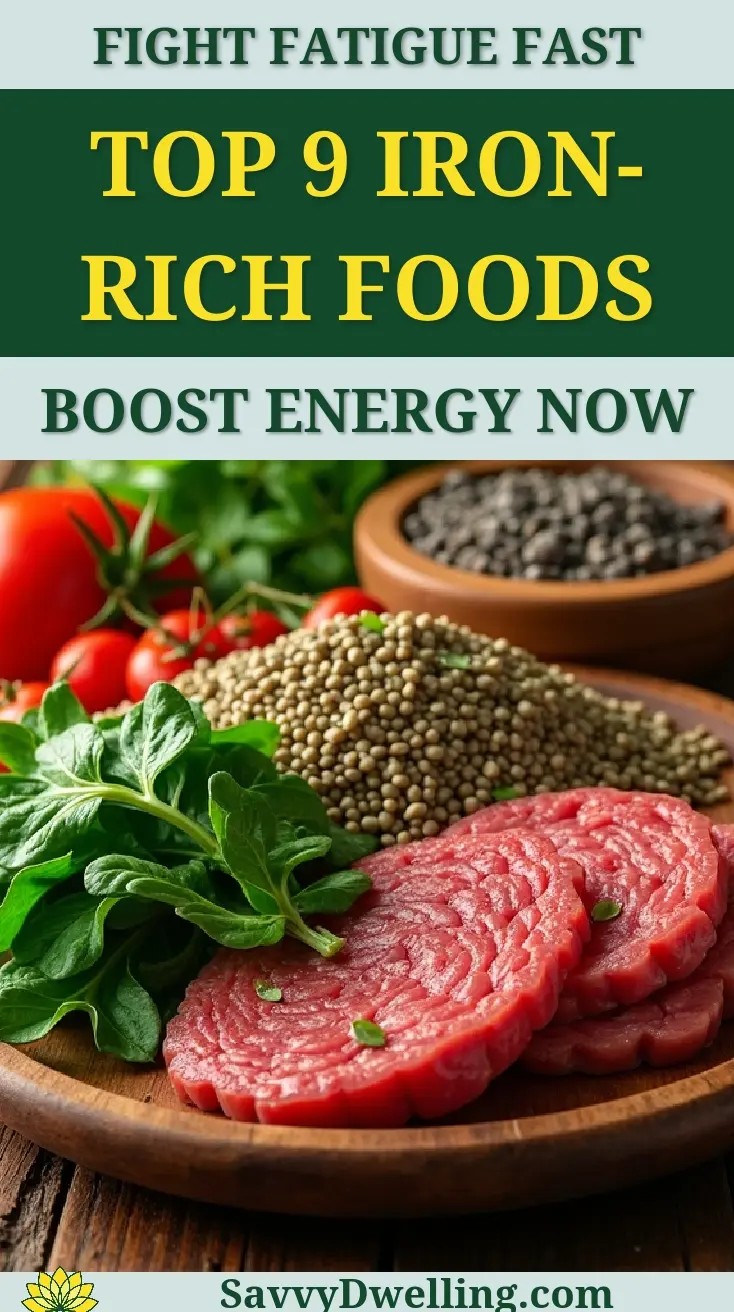The Fastest Way to Lose 9 Pounds (Safely and Without Extreme Dieting)
Tired of weight loss plans that promise the world but leave you hungry, cranky, and ultimately disappointed? You’re not alone in feeling frustrated by extreme diets that seem impossible to stick with or methods that work for others but not for you. Losing weight quickly doesn’t have to mean starving yourself or spending hours at the gym every single day.
This guide breaks down the exact strategies that support safe, rapid weight loss without the misery of crash dieting or unsustainable restrictions. We’ve researched the science behind effective weight management and simplified it into six actionable methods that work with your body’s natural processes, not against them. You’ll learn how to lose 9 pounds by combining smart nutrition choices, strategic movement, and simple lifestyle adjustments that you can actually maintain.
Contents
- Quick Solutions Table
- 1. Create a Smart Caloric Deficit Without Starvation
- 2. Master Water Weight Management
- 3. Focus on High-volume, Low-calorie Foods
- 4. Implement Strategic Exercise for Maximum Fat Loss
- 5. Optimize Your Sleep and Stress Response
- 6. Use Intermittent Fasting Safely
- The Science Made Simple: Why Rapid Weight Loss Happens
- Common Mistakes to Avoid When Losing 9 Pounds Fast
- Frequently Asked Questions
- Closing Thoughts
Quick Solutions Table
If you’re wondering about the fastest way to lose 9 pounds safely, this comprehensive guide breaks down exactly what you need to know. Each method targets different aspects of weight loss, from reducing water retention to optimizing fat burning.
The strategies below work together synergistically. You don’t need to implement everything at once, but combining 2-3 approaches will accelerate your results significantly.
| Method | Expected Results | Timeline | Difficulty Level | Best For |
|---|---|---|---|---|
| Smart Caloric Deficit | 1-2 lbs per week | 4-9 weeks | Easy | Sustainable fat loss |
| Water Weight Management | 2-5 lbs quickly | 3-7 days | Easy | Quick initial results |
| High-Volume Foods | 1-2 lbs per week | 2-6 weeks | Moderate | Staying full while losing |
| Strategic Exercise | Enhanced fat burning | 2-8 weeks | Moderate | Muscle preservation |
| Sleep & Stress Optimization | Supports all methods | 1-4 weeks | Easy | Hormonal balance |
| Intermittent Fasting | 1-3 lbs per week | 2-6 weeks | Challenging | Metabolic flexibility |
Most people see the fastest results by combining water weight management with a smart caloric deficit in the first week. This approach can help you lose 9 pounds within 2-4 weeks while maintaining your energy and health.
The timeline varies based on your starting weight, metabolism, and how consistently you apply these methods. Heavier individuals often see faster initial results, while those closer to their goal weight may need the full timeframe.
1. Create a Smart Caloric Deficit Without Starvation
How It Works
Your body needs a specific amount of energy each day to function properly. Creating a moderate caloric deficit of 500-750 calories daily helps you lose 9 pounds safely without triggering your body’s starvation response. This approach preserves muscle mass while promoting fat loss, which is especially important when you’re over 40.
When you cut calories too drastically, your metabolism slows down to conserve energy. A smart deficit maintains your metabolic rate while ensuring steady progress toward losing 9 pounds.
What You’ll Need
- Food tracking app or journal
- Digital kitchen scale
- Measuring cups and spoons
- Calculator or TDEE (Total Daily Energy Expenditure) calculator online
- Body weight scale
Step-by-step Instructions
Calculate Your Daily Needs
- Use an online TDEE calculator to determine your baseline calorie needs
- Input your age, gender, height, weight, and activity level accurately
- Record this number as your maintenance calories
- Multiply your body weight in pounds by 12-14 for a quick estimate if calculators aren’t available
Set a Safe Deficit Range
- Subtract 500-750 calories from your maintenance number
- Never go below 1,200 calories for women or 1,500 calories for men
- Start with a 500-calorie deficit for the first week
- Adjust by an additional 100-250 calories if weight loss stalls after week one
Track Your Progress
- Weigh yourself at the same time each morning, ideally after using the bathroom
- Log all foods and beverages consumed throughout the day
- Take body measurements weekly (waist, hips, arms, thighs)
- Monitor energy levels and mood to ensure you’re not undereating
- Adjust your deficit if you’re losing more than 2-3 pounds per week consistently

2. Master Water Weight Management
How It Works
Water weight can account for 3-5 pounds of your initial weight loss when learning how to lose 9 pounds fast and safe. Your body stores water with carbohydrates and sodium, so strategic management of these elements creates rapid visible results. One key aspect is staying hydrated; drinking water not only aids in weight loss but also has numerous health benefits.
Reducing water retention isn’t just about drinking more water. It involves balancing electrolytes, managing carbohydrate intake, and supporting your kidneys’ natural filtration process.
What You’ll Need
- Large water bottle (32-40 oz capacity)
- Electrolyte supplements or natural sea salt
- Food labels for sodium content checking
- Measuring cup for water intake tracking
- Fresh herbs and spices for flavor
Step-by-step Instructions
Reduce Sodium Intake
- Aim for less than 1,500 mg of sodium daily (check food labels)
- Replace processed foods with fresh alternatives for three days
- Use herbs, garlic, lemon, and vinegar instead of salt for seasoning
- Avoid restaurant meals and packaged foods during your initial weight loss phase
Optimize Hydration
- Drink half your body weight in ounces of water daily
- Add a pinch of sea salt to your first glass of water each morning
- Sip water consistently rather than chugging large amounts at once
- Stop drinking fluids 2 hours before bedtime to prevent disrupted sleep
Balance Carbohydrate Timing
- Limit refined carbohydrates to 50-75 grams daily for the first week
- Focus on vegetables, lean proteins, and healthy fats
- Time any carbohydrate intake around your most active periods
- Include potassium-rich foods like spinach, avocados, and mushrooms daily
Also See: A Guide to the Best Foods for Lowering High Blood Pressure
3. Focus on High-volume, Low-calorie Foods
How It Works
Volume eating allows you to feel satisfied while maintaining your caloric deficit. Foods high in water and fiber content provide bulk without excessive calories, making it easier to stick to your plan for losing 9 pounds fast.
These foods trigger satiety signals in your stomach and brain, reducing cravings and preventing the urge to overeat calorie-dense options.
What You’ll Need
- Fresh vegetables (leafy greens, broccoli, cauliflower, zucchini)
- Low-calorie fruits (berries, watermelon, cucumbers)
- Lean proteins (chicken breast, fish, egg whites)
- Food storage containers for meal prep
- Steamer basket or air fryer for cooking
Step-by-step Instructions
Fill Half Your Plate Strategy
- Cover half your plate with non-starchy vegetables at every meal
- Choose one quarter for lean protein (palm-sized portion)
- Reserve the remaining quarter for complex carbohydrates or healthy fats
- Start each meal with a large salad or vegetable soup
Smart Snack Swaps
- Replace chips with sliced cucumbers, bell peppers, or jicama sticks
- Choose air-popped popcorn (3 cups) instead of crackers
- Snack on frozen grapes or berries rather than dried fruit
- Use lettuce wraps instead of bread for sandwiches
- Substitute spiralized vegetables for pasta in your favorite dishes
Meal Prep Essentials
- Wash and chop vegetables immediately after grocery shopping
- Cook large batches of lean proteins twice weekly
- Pre-portion snacks into small containers to avoid overeating
- Prepare grab-and-go salad jars with dressing on the bottom
- Keep emergency low-calorie foods readily available (pre-cut vegetables, hard-boiled eggs)
4. Implement Strategic Exercise for Maximum Fat Loss
How It Works
Exercise becomes your secret weapon when you want to lose 9 pounds fast and safe. The right combination accelerates fat burning while preserving the muscle that keeps your metabolism humming.
Your body burns calories during exercise, but the magic happens afterward. High-intensity workouts create an “afterburn effect” where you continue torching calories for hours post-workout. Proper nutrition before and after exercise plays a crucial role in maximizing this calorie-burning effect. By fueling your body correctly, you can enhance your performance and recovery.
Strength training prevents muscle loss during rapid weight reduction. When you maintain muscle mass, your body burns more calories at rest, making it easier to sustain your progress.
What You’ll Need
- Timer or stopwatch app
- Basic dumbbells or resistance bands
- Comfortable workout clothes
- Water bottle
- Yoga mat or towel
- Step counter or fitness tracker (optional)
Step-by-step Instructions
High-Intensity Interval Training (HIIT)
- Choose 3-4 exercises like jumping jacks, burpees, mountain climbers, or high knees
- Warm up with 5 minutes of light movement
- Work at maximum effort for 30 seconds
- Rest for 30-60 seconds between intervals
- Repeat for 15-20 minutes total
- Cool down with gentle stretching for 5 minutes
- Perform HIIT sessions 3-4 times per week
HIIT sessions burn significantly more calories than steady-state cardio in less time. This efficiency makes it perfect when you’re focused on how to lose 9 pounds fast in a week.
Strength Training for Muscle Preservation
- Focus on compound movements like squats, push-ups, and rows
- Perform 8-12 repetitions per exercise
- Complete 2-3 sets with 60-90 second rest periods
- Target different muscle groups on alternating days
- Include full-body sessions 2-3 times weekly
- Progress by adding weight, reps, or time under tension
Muscle tissue burns more calories than fat tissue, even while you sleep. Preserving muscle during weight loss keeps your metabolism elevated long-term.
Daily Movement Goals
- Aim for 8,000-10,000 steps daily
- Take stairs instead of elevators when possible
- Park farther away from destinations
- Set hourly movement reminders on your phone
- Include 5-minute walking breaks during work
- Stand during phone calls or meetings
These small movements add up throughout the day. Non-exercise activity thermogenesis (NEAT) can account for hundreds of extra calories burned daily.

5. Optimize Your Sleep and Stress Response
How It Works
Poor sleep sabotages your weight loss efforts by disrupting hormones that control hunger and metabolism. When you’re sleep-deprived, your body produces more ghrelin (hunger hormone) and less leptin (satiety hormone).
Chronic stress elevates cortisol levels, which promotes fat storage around your midsection. Managing stress and sleep quality can accelerate your progress toward losing 9 pounds fast.
Quality sleep also supports recovery from exercise and helps regulate blood sugar levels. This creates the optimal internal environment for fat loss. Incorporating specific bedtime drinks can further enhance this process, as they help boost metabolism while you sleep. Choosing the right drink before bed can be a simple yet effective way to support weight loss efforts during the night.
What You’ll Need
- Blackout curtains or eye mask
- White noise machine or earplugs
- Blue light blocking glasses (optional)
- Comfortable room temperature (65-68°F)
- Journal or note-taking app
- Herbal teas (chamomile, passionflower)
Step-by-step Instructions
Sleep Hygiene Protocol
- Set a consistent bedtime and wake time, even on weekends
- Stop eating 2-3 hours before bedtime
- Limit screens 1 hour before sleep
- Keep your bedroom cool, dark, and quiet
- Create a relaxing pre-sleep routine (reading, gentle stretching)
- Avoid caffeine after 2 PM
- Aim for 7-9 hours of sleep nightly
Quality sleep regulates the hormones that control appetite and fat storage. When you’re well-rested, you naturally make better food choices and have more energy for exercise.
Stress Management Techniques
- Practice deep breathing for 5 minutes twice daily
- Try progressive muscle relaxation before bed
- Write in a journal to process daily stressors
- Take short walks outdoors when feeling overwhelmed
- Listen to calming music or nature sounds
- Set boundaries around work and social commitments
Chronic stress literally changes your body chemistry in ways that make weight loss harder. Stress management isn’t optional when you want fast results.
Hormonal Balance Support
- Maintain consistent meal timing to stabilize blood sugar
- Include protein at every meal to support hormone production
- Limit alcohol, which disrupts sleep and hormone function
- Consider magnesium supplementation (consult healthcare provider first)
- Get morning sunlight exposure to regulate circadian rhythm
- Monitor your energy levels and mood changes
Your hormones orchestrate everything from appetite to fat burning. Supporting hormonal balance creates the ideal conditions for rapid, sustainable weight loss.
6. Use Intermittent Fasting Safely
How It Works
Intermittent fasting creates natural calorie restriction while potentially boosting fat burning hormones. When you limit your eating window, you often naturally consume fewer calories without feeling deprived.
During fasting periods, your body shifts from using glucose for fuel to burning stored fat. This metabolic flexibility can accelerate the process of how to lose 9 pounds fast and safe.
Fasting also improves insulin sensitivity, which helps your body process carbohydrates more efficiently when you do eat.
What You’ll Need
- Timer or fasting app
- Water bottles or herbal teas
- Planned meal schedule
- Backup healthy snacks
- Journal to track hunger and energy levels
- Consultation with healthcare provider (if you have medical conditions)
Step-by-step Instructions
Choose Your Fasting Window
- Start with a 12-hour fast (8 PM to 8 AM)
- Gradually extend to 14 hours if comfortable
- Consider 16:8 method (16 hours fasting, 8 hours eating)
- Skip breakfast or dinner, whichever feels more natural
- Maintain the same schedule on weekends
- Listen to your body’s hunger and energy cues
Starting slowly prevents the overwhelm that causes people to abandon intermittent fasting too quickly. Your body needs time to adapt to this eating pattern.
Plan Your Eating Schedule
- Schedule your first meal during your eating window
- Include protein and fiber to promote satiety
- Space meals 3-4 hours apart within your window
- Plan nutrient-dense foods to maximize nutrition
- Prepare meals in advance to avoid poor choices
- Stay hydrated with water, herbal teas, and black coffee during fasting
What you eat during your eating window matters just as much as when you eat it. Focus on foods that support your goal to lose 9 lbs fast while nourishing your body.
Monitor Your Body’s Response
- Track energy levels throughout the day
- Note changes in hunger patterns
- Monitor sleep quality and mood
- Watch for signs of excessive fatigue or irritability
- Adjust fasting window if needed
- Stop immediately if you experience dizziness or weakness
Intermittent fasting isn’t right for everyone. Your body will tell you whether this approach supports or hinders your weight loss goals. Pay attention and adjust accordingly.
The Science Made Simple: Why Rapid Weight Loss Happens
Water Weight Vs. Fat Loss
When you first start your journey to lose 9 pounds, your body goes through some fascinating changes. The first 3-5 pounds you lose are typically water weight, not fat, which explains why some people see dramatic results in their first week.
Your body stores carbohydrates as glycogen in your muscles and liver. Each gram of glycogen holds about 3 grams of water. When you reduce calories or carbs, your body burns through these glycogen stores first, releasing all that stored water.
Fat loss happens more gradually. True fat loss occurs at a rate of about 1-2 pounds per week when you maintain a consistent caloric deficit. This is why the fastest way to lose 9 pounds combines initial water weight reduction with sustainable fat loss strategies.
Metabolic Factors That Support Quick Results
Your metabolism isn’t just one thing – it’s a complex system that responds quickly to changes. Your basal metabolic rate accounts for about 70% of your daily calorie burn, even when you’re sitting still.
Several factors can temporarily boost your metabolic rate:
- Protein digestion burns 20-30% more calories than processing carbs or fats
- Cold exposure can increase calorie burn by up to 15%
- High-intensity exercise creates an “afterburn effect” lasting 12-24 hours
- Building muscle tissue increases your resting metabolic rate permanently
Your body also responds to dietary changes within 24-48 hours by adjusting hormone levels like insulin, cortisol, and thyroid hormones that directly impact weight loss speed.
How Your Body Responds to Caloric Changes
Your body is remarkably adaptable when it comes to caloric changes. Within the first 72 hours of reducing calories, your body begins shifting from glucose to fat as its primary fuel source.
Here’s what happens during the first week of losing 9 pounds:
- Hours 0-24: Glycogen stores begin depleting, water weight starts dropping
- Days 2-3: Body enters mild ketosis, appetite-regulating hormones adjust
- Days 4-7: Fat oxidation increases significantly, energy levels stabilize
Your hunger hormones also recalibrate quickly. Ghrelin (hunger hormone) decreases, while leptin (satiety hormone) becomes more effective at signaling fullness. This natural appetite suppression makes it easier to maintain your caloric deficit without feeling deprived.
Common Mistakes to Avoid When Losing 9 Pounds Fast
Cutting Calories Too Drastically
The biggest trap people fall into is thinking extreme calorie restriction equals faster results. Cutting more than 1,000 calories per day actually slows down weight loss by triggering your body’s starvation response.
When you slash calories too severely, your body:
- Reduces metabolic rate by up to 20%
- Breaks down muscle tissue for energy
- Increases cortisol production, promoting fat storage
- Triggers intense cravings that lead to overeating
A moderate deficit of 500-750 calories per day allows you to lose 9 pounds safely while preserving your metabolic rate. This approach feels sustainable and prevents the yo-yo effect that derails so many weight loss efforts.
Ignoring Hydration and Electrolytes
Many people focus solely on food while completely overlooking hydration. Dehydration can slow your metabolism by up to 25% and make you feel hungrier than you actually are. Recognizing the signs of dehydration is essential for maintaining overall health. It’s important to know how to tell if you’re dehydrated so you can rehydrate quickly before it affects your well-being.
When losing weight quickly, you lose electrolytes along with water. Without proper electrolyte balance, you might experience:
- Fatigue and brain fog
- Muscle cramps and weakness
- Intense sugar cravings
- Headaches and dizziness
Drinking half your body weight in ounces of water daily, plus adding a pinch of sea salt to your meals, prevents these issues and supports faster fat loss.
Overexercising Without Recovery
Exercise enthusiasm is great, but overdoing it backfires spectacularly. Excessive exercise without adequate recovery increases cortisol levels, which actually promotes fat storage around your midsection.
Signs you’re overexercising include:
- Feeling exhausted rather than energized after workouts
- Difficulty sleeping despite being tired
- Increased hunger and cravings
- Mood swings and irritability
Aim for 3-4 intense workout sessions per week with at least one full rest day. Your body burns fat during recovery, not just during exercise.
Focusing Only on the Scale
The scale can be your worst enemy when trying to lose 9 pounds fast. Daily weight fluctuations of 2-4 pounds are completely normal due to water retention, food timing, and hormonal changes.
Women especially see significant weight fluctuations during their menstrual cycle. Stress, sodium intake, and even the weather can affect what the scale shows on any given day.
Track your progress through multiple measurements: waist circumference, how your clothes fit, progress photos, and energy levels. These indicators often show positive changes even when the scale doesn’t budge.
Skipping Meals or Entire Food Groups
Skipping meals seems logical – fewer meals should equal faster weight loss, right? Wrong. Meal skipping actually triggers your body to store more fat and slows your metabolism as a protective mechanism.
Eliminating entire food groups creates nutritional gaps that can sabotage your efforts. Your body needs:
- Protein for muscle preservation and satiety
- Healthy fats for hormone production
- Complex carbohydrates for brain function and energy
- Fiber for digestive health and appetite control
Eating balanced meals every 3-4 hours keeps your metabolism active and prevents the binge-restrict cycle that makes losing 9 pounds feel impossible. Incorporating foods that naturally boost metabolism can further enhance weight loss efforts. These metabolism-boosting foods not only help in burning calories but also provide essential nutrients that sustain energy levels throughout the day.

Frequently Asked Questions
How Long Does It Typically Take to Lose 9 Pounds Safely Using These Methods?
A safe timeline for losing 9 pounds is generally 3 to 6 weeks, aiming for a loss of 1-2 pounds per week. This rate prioritizes fat loss over muscle depletion and helps avoid metabolic adaptation. Stick to a consistent caloric deficit and incorporate regular exercise to see steady results without resorting to crash diets.
What Are the Warning Signs That I’m Losing Weight Too Quickly or Unsafely?
Red flags include persistent fatigue, headaches, dizziness, or a noticeable decline in workout performance, which may indicate inadequate nutrition or dehydration. Pay attention to extreme hunger or mood swings, as these can signal that your deficit is too aggressive. If you experience these, increase your calorie intake slightly and focus on nutrient-dense foods. Addressing nutritional needs can significantly help manage energy levels and combat chronic fatigue.
Can I Adapt These Strategies if I Have Dietary Restrictions, Such As Food Allergies or a Vegetarian Diet?
Yes, the core principles are flexible. For allergies, substitute trigger foods with safe alternatives that are equally high in volume and low in calories, like using sunflower seed butter instead of peanut butter. Vegetarians can emphasize plant-based proteins like beans, lentils, and Greek yogurt to meet protein needs without compromising satiety.
What Should I Do to Maintain My Weight After Losing the 9 Pounds?
Transition slowly by increasing your daily calories by 100-200 increments each week until you reach a maintenance level that stabilizes your weight. Continue habits like regular strength training and prioritizing whole foods. Monitor your weight weekly and adjust your intake if you see a gain of more than 2-3 pounds to prevent rebound weight gain.
Closing Thoughts
You now have a complete roadmap to lose 9 pounds safely without resorting to extreme dieting or unsustainable practices. The key to your success lies in combining these evidence-based strategies consistently over the next few weeks. Remember, the fastest results come from addressing multiple factors simultaneously – your caloric deficit, water weight management, food choices, exercise routine, sleep quality, and stress levels all work together.
Start with just one or two strategies from this guide today, then gradually add more as they become natural habits. Your body will respond best to steady, sustainable changes rather than dramatic overnight shifts. Track your progress beyond just the scale – notice improvements in your energy levels, sleep quality, and how your clothes fit.
Ready to transform your approach to weight loss? Begin implementing these steps today and stay connected with Savvy Dwelling for more research-backed wellness strategies that actually work. Your healthiest, most confident self is just a few consistent weeks away.


